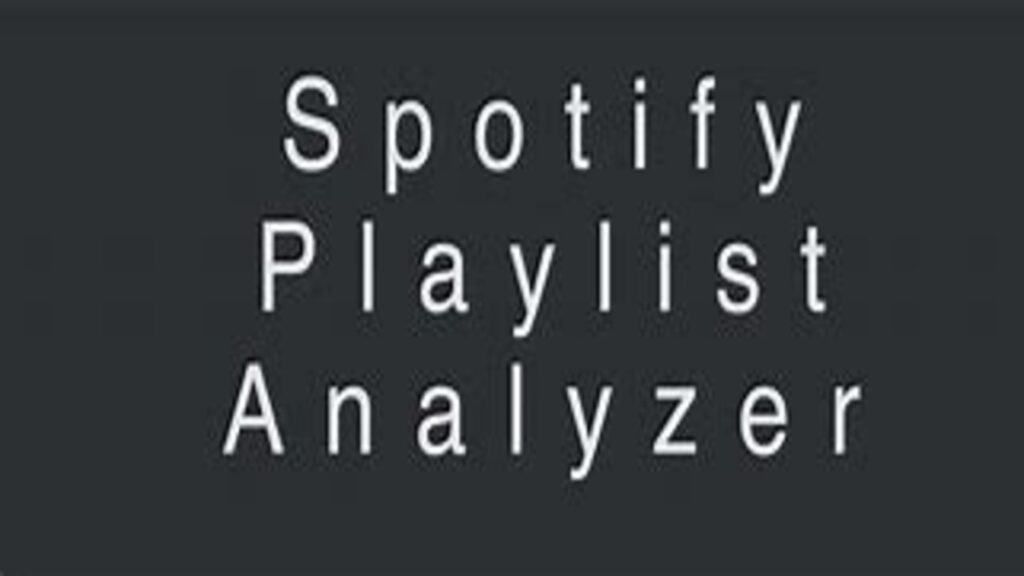Introduction to Spotify Playlist Analysis
Analyze a Spotify Playlist. So, you’re scrolling through Spotify, vibing to your favorite playlists, and wondering what actually makes a playlist tick? Whether you’re an artist, marketer, or just a music nerd, analyzing a Spotify playlist can unlock powerful insights.
Why Playlist Analysis Matters
Playlists are the modern-day mixtapes, but way more strategic. They influence listener behavior, drive song popularity, and even help songs go viral. Understanding why a playlist works can help you create better ones or get your own music featured.
Who Should Analyze Playlists?
Artists, music producers, playlist curators, data nerds, or just about anyone who wants to understand music trends should dive into this. Playlist analysis can help you figure out what’s working—and what’s not.
Basics of Spotify Playlists
What Makes a Playlist Stand Out
Great playlists do more than just shuffle songs together. They tell a story, evoke emotion, and often have a consistent vibe or energy. Think of a playlist like a movie soundtrack it flows, it builds, and it means something.
The Role of Algorithms and Curation
Spotify uses both human curation and machine learning. Editorial playlists (like RapCaviar) are built by Spotify’s in-house editors, while algorithmic ones (like Discover Weekly) are based on your listening habits.
Key Metrics to Analyze
Let’s break down the real meat of playlist analysis—the data.
Track Popularity and Stream Counts
How popular is each song? Spotify’s popularity score (0–100) is a good indicator. High scores mean frequent plays, while low ones might suggest hidden gems—or skips.
Artist Diversity
Does the playlist feature a mix of artists, or is it heavy on one name? A diverse artist lineup can appeal to broader audiences, while focused playlists might serve niche fans better.
Genre Variety
Genres set the vibe. A playlist with multiple genres can feel chaotic or eclectic—depends on the execution. Analyzing genre variety helps you assess whether the playlist stays true to its theme.
Playlist Length and Duration
Some users love 30-song playlists; others prefer short and snappy ones. Know what your audience wants. Total runtime also matters—do people listen through or bounce?
Tools to Analyze Spotify Playlists
Here’s your toolbox:
Spotify for Artists
Spotify’s own analytics tool gives artists insights on where their songs are placed, stream counts, and audience demographics.
PlaylistAnalyzer.net
A user-friendly site where you plug in a playlist link and get stats on genres, artists, keys, BPMs, and more. Super handy.
Soundcharts and Chartmetric
These premium tools offer deep industry-level analytics, including playlist placements, growth trends, and market reach.
Manual Analysis Techniques
Don’t want to use fancy tools? No worries.
Using Excel or Google Sheets
You can export playlist info using web extensions or tools like Exportify. Once you’ve got that data, throw it into Excel and sort by artist, duration, or popularity.
Extracting Data with Web Tools
Extensions like Playlist Miner and Exportify let you grab track lists from public playlists for deeper analysis.
Understanding Your Audience Through Playlists
Audience Mood and Energy Levels
Energy level (measured by tools like Spotify’s API) tells you whether your playlist is a calm background mix or a dancefloor banger list.
Time of Day Listening Trends
Morning playlists often feature mellow tracks, while evening playlists lean toward upbeat or romantic songs. Analyze when your playlist performs best.
Conclusion
Analyzing a Spotify playlist isn’t just for geeks—it’s a secret weapon. Whether you’re trying to grow your streams, become a better curator, or just understand what makes a playlist addictive, diving into the data gives you an edge. Remember, behind every great playlist is a mix of science, art, and strategy.
FAQs
Q1: Can I analyze private Spotify playlists?
No, you can only analyze public playlists unless you own the private one and export its data manually.
Q2: What’s the best free tool to analyze playlists?
PlaylistAnalyzer.net is a great free tool with solid insights for casual users.
Q3: How often should I update my playlist?
Ideally once a week or bi-weekly to keep it fresh and engaging.
Q4: Do playlist followers affect algorithm ranking?
Yes! Playlists with more followers often get prioritized by Spotify’s algorithm.
Q5: Can I get my song on Spotify editorial playlists through analysis?
Not directly, but understanding trends can help you craft tracks that better fit those playlists.







